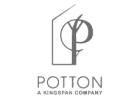The Pantone Matching System is a standardised colour reproduction system. By Standardising the colours, different ink manufacturers in different locations can all refer to the Pantone System to make sure the colours match without direct contact with one another. One such use is standardising colours in the CMYK process. The CMYK process is a method of printing color by using four inks – Cyan, Magenta, Yellow, and Key (Black). A majority of the world’s printed material is produced using the CMYK process, and there is a special subset of Pantone colours that can be reproduced using CMYK.
Those that are possible to simulate through the CMYK process are labelled as such within the company’s guides.
However, most of the Pantone system’s 1,114 Spot Colours cannot be simulated with CMYK but with 13 base pigments (15 including white and black) mixed in specified amounts.
The Pantone system also allows for many ‘special’ colours to be produced such as metallics and fluorescents. While most of the Pantone system colours are beyond the printed CMYK gamut, it was only in 2001 that Pantone began providing translations of their existing system with screen-based colours. (Screen-based colours use the RGB—red, green, blue—system to create various colours.)
Pantone colours are described by their allocated number (typically referred to as, for example, ‘PMS 130’). PMS colors are almost always used in branding and have even found their way into government legislation (to describe the colors of flags).































































